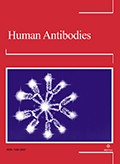Authors: Erhabor, O. | Mohammad, S.Y. | Bello, L. | Onuigwe, F.U. | Abdulrahman, Y. | Zama, I. | Buhari, H. | Bagudo, A. | Ibrahim, K. | Ahmed, M. | Udomah, F.P. | Adias, T.C. | Erhabor, T. | Okara, G.C.
Article Type:
Research Article
Abstract:
BACKGROUND: Hepatitis B virus infection is a global public health problem. The virus has infected more than one-third of the global population. It has been estimated that 360 million chronic carriers are living around the world with a high risk for developing cirrhosis, hepatic carcinoma and hepatic failure. OBJECTIVE: The aim of this study was to determine the prevalence of some hepatitis B markers among pregnant women attending antenatal clinic in Sokoto Specialist Hospital, Nigeria. METHODS: The hepatitis testing was carried out using the Skytec-Rapid Diagnostic HBV-5 rapid kit (Skytec-Rapid Diagnostic, USA). The kit
…is based on lateral flow chromatographic immunoassay for the qualitative detection of HBsAg, HBsAb, HBeAg, HBeAb, and HBcAb in human serum or plasma. Panel format can conveniently test for five targets at once and utilizes all markers to help distinguish between acute and chronic infections. RESULTS: Out of 117 pregnant women tested, 15 were positive for HBsAg (12.8%), 6 positive for HBsAb (5.1%), 1 for HBeAg (0.9%), 14 tested positive for HBeAb (12.0%), and 14 tested for HBcAb (12.0%). The prevalence of HBsAg, HBsAb, HBeAg, HBcAb and HBcAb was compared based on ethnicity. HBsAb was significantly higher among the Hausa ethnic group (p = 0.001). The prevalence of HBsAb, HBeAg, HBcAb and HBcAb was not affected by ethnicity (p > 0.05). The prevalence of HBsAg, HBsAb, HBeAg, HBcAb and HBcAb was compared based on age. Infection by the hepatitis B virus markers was higher among young adult and middle age groups. The difference was however not statistically significant (p > 0.05). The prevalence of HBsAg, HBsAb, HBeAg, HBcAb and HBcAb was compared based on the educational status, previous history of blood transfusion, jaundice, employment status and previous history of still births among the pregnant subjects. There were no statistically significant differences in the prevalence of Hepatitis B virus markers (p > 0.05). CONCLUSION: The study observed a high prevalence of various hepatitis B viral markers among pregnant women attending antenatal care in Specialist Hospital Sokoto. There is need for routine screening of all pregnant women and infants born to hepatitis B positive mothers. Government and non-governmental organizations should intensify efforts to enlighten the general population on the public health importance of the disease and the importance of hepatitis screening. There is also need for the development of a treatment protocol for the management of pregnant women positive for hepatitis B to prevent mother to child transmission. There is an urgent need for the implementation of evidenced-based best practice of providing universal vaccination against hepatitis B for all hepatitis B negative women of child bearing age in particular and all Nigerians in general.
Show more
Keywords: Prevalence, hepatitis B virus markers, pregnant women, Specialist Hospital Sokoto, Nigeria
DOI: 10.3233/HAB-200412
Citation: Human Antibodies,
vol. 28, no. 3, pp. 233-243, 2020
Price: EUR 27.50




